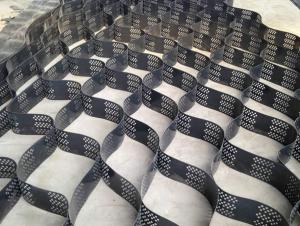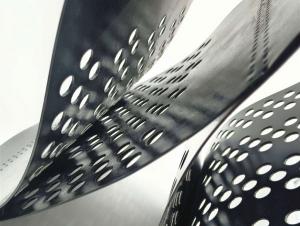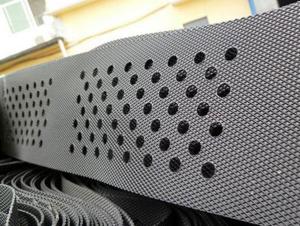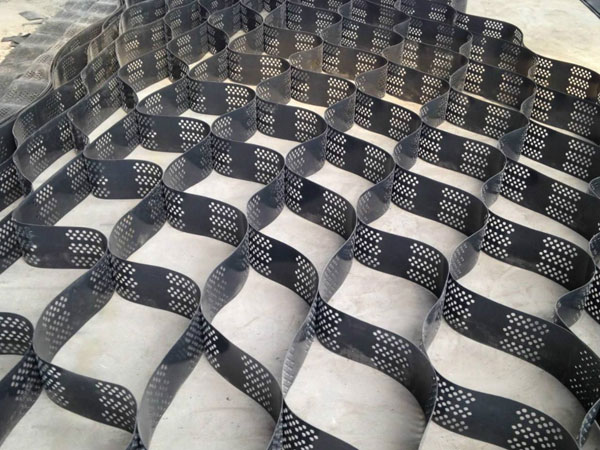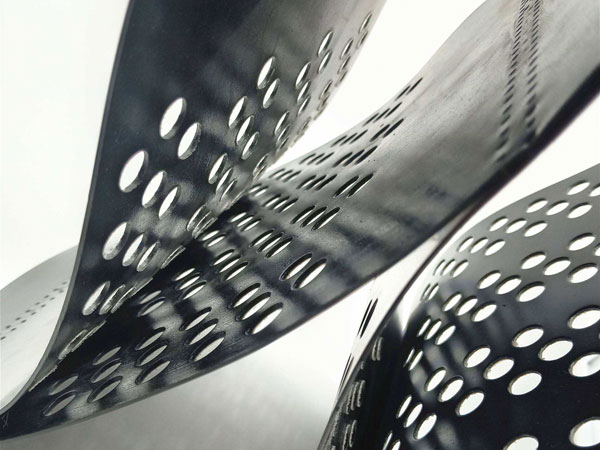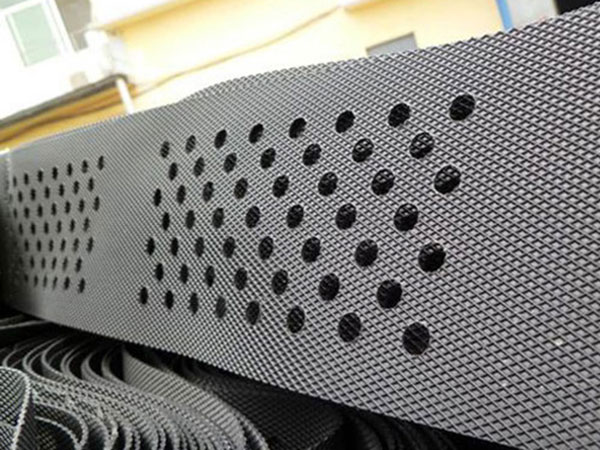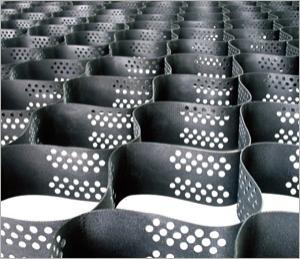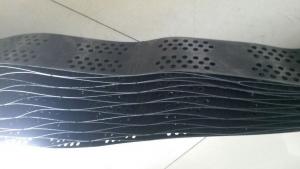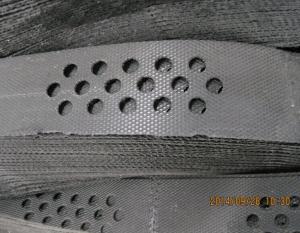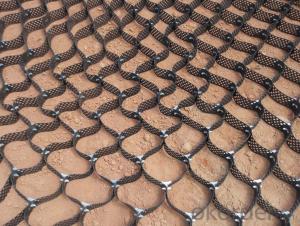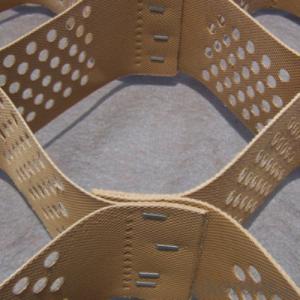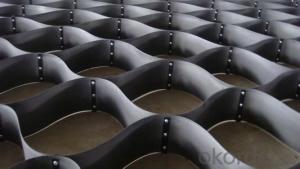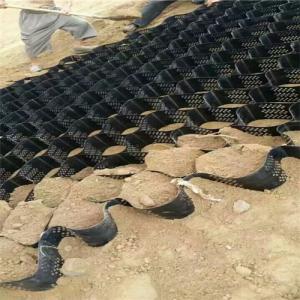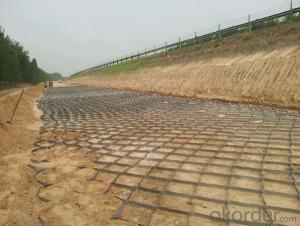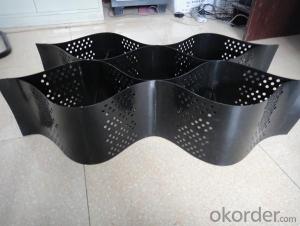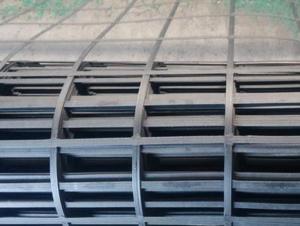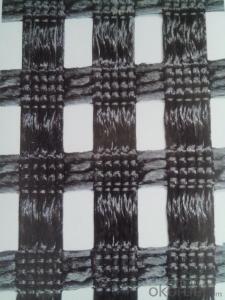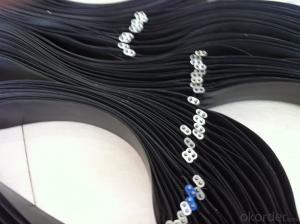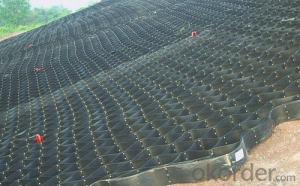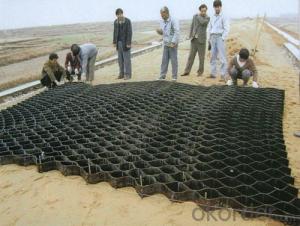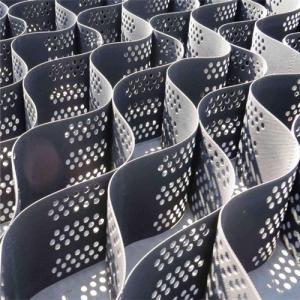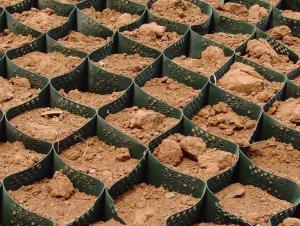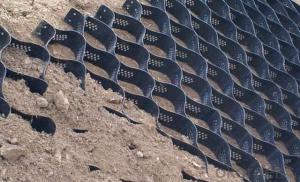Geocells Philippines - HDPE Geocell with Various Parameters from China Supplier
- Loading Port:
- Guangzhou
- Payment Terms:
- TT or LC
- Min Order Qty:
- 10 m²
- Supply Capability:
- 9999999 m²/month
OKorder Service Pledge
OKorder Financial Service
You Might Also Like
We provide Geocells with various parameters. If you have procurement needs, please contact us, and we will provide you with samples and the lowest price of the factory. Our products have passed the CE certification of EU. If you need the parameters of various types of Geocellss, you can contact us to obtain the product atlas.
What is a Geocells?
Geocells is a three-dimensional network cell structure formed by high-strength welding of reinforced HDPE sheet materials. It is generally welded by ultrasonic needle. Some holes are drilled on the diaphragm due to engineering needs.
Characteristics of Geocells
1. It is flexible, transportable and collapsible. During construction, it can be tensioned into a mesh and filled with loose materials such as soil, gravel and concrete to form a structure with strong lateral restrictions and large stiffness.
2. Light material, abrasion resistance, stable chemical performance, light and oxygen aging resistance, acid and alkali resistance, suitable for different soil conditions such as desert.
3. High lateral limit and anti-skid, anti deformation, effectively enhance the bearing capacity of the subgrade and disperse load.
4. Changing geometric dimensions such as Geocells height and welding distance can meet different engineering needs.
5. Flexible, small transport volume; Convenient connection and fast construction speed.
Characteristics of Geocells:
1. It can be expanded and contracted freely, transported and stacked. During construction, it can be tensioned into a network and filled with loose materials such as soil, gravel and concrete to form a structure with strong lateral restrictions and large stiffness.
2. It is light, wear-resistant, stable in chemical performance, resistant to light and oxygen aging, acid and alkali, and suitable for different soil conditions such as desert.
3. High lateral limit and anti-skid, anti deformation, effectively enhance the bearing capacity of the subgrade and disperse load.
4. Changing geometric dimensions such as Geocells height and welding distance can meet different engineering needs.
5. Flexible, small transportation volume, convenient connection and fast construction speed. That is to say, once the load acts on the subgrade, a wedge-shaped active area will be formed under the load, which will be squeezed through the transition area, so that the passive area will bulge.
Components of Geocells
Geocells is a mesh cell structure formed by high-strength HDPE or PP copolymer broadband through strong welding or riveting. It is flexible and can be folded during transportation. When it is used, it is opened and filled with earth rock or concrete materials, forming a structure with strong lateral restrictions and large stiffness. It can be used as cushion to treat soft foundation to increase the bearing capacity of the foundation, and can also be laid on the slope to form a slope protection structure, and can also be used to build a retaining structure.
Use of Geocells
1. It is used to stabilize highway and railway subgrade.
2. It is used to control levees and shallow river channels bearing gravity.
3. Mixed retaining wall used to prevent landslide and loaded gravity.
4. When encountering soft foundation, the use of Geocells can greatly reduce the construction labor intensity, reduce the subgrade thickness, and the construction speed is fast, the performance is good, and the project cost is greatly reduced.
Engineering Application of Geocells
1. Treat half filled and half excavated subgrade. When building an embankment on a slope with a natural gradient of more than 1:5, steps shall be excavated at the base of the embankment, and the width of the steps shall not be less than 1M. When building or rebuilding the highway by stages, steps shall be excavated at the junction of the fill slopes of the new and old subgrades. The width of the steps of high-grade highways is generally 2M. Geocellss shall be laid on the horizontal surface of each step, and the reinforcement effect of the facade side of the Geocellss shall be used, Better solve the problem of uneven settlement.
2. Subgrade in windy sand area. The subgrade in windy sand area shall mainly be low embankment, and the filling height is generally not less than 0.3M Due to the professional requirements of low subgrade and heavy bearing for subgrade construction in wind blown sand area, the use of Geocells can play a side limiting role for loose filler, and ensure that the subgrade has high stiffness and strength within a limited height to withstand the load stress of large vehicles.
3. The abutment back subgrade is filled with reinforcement. The use of Geocells can better achieve the purpose of reinforcing the abutment back. Enough friction can be generated between the Geocells and the filler, which can effectively reduce the uneven settlement between the subgrade and the structure, and ultimately effectively alleviate the early impact damage of "abutment bump" disease on the bridge deck.
4. Subgrade in permafrost regions. When constructing fill subgrade in permafrost regions, the minimum fill height shall be reached to prevent the occurrence of frost boiling or the reduction of the upper limit of the frozen layer, which may cause excessive settlement of the embankment. The unique facade reinforcement effect of the Geocells and the effective implementation of the overall lateral limit can ensure the minimum fill height in some special sections to the greatest extent, and make the fill have high quality strength and stiffness.
5. Treatment of loess collapsible subgrade. When expressways and Class I highways pass through collapsible loess and loess sections with good compressibility, or when the allowable bearing capacity of the high embankment foundation is lower than the pressure of the vehicle load and the dead weight of the embankment, the subgrade should also be treated according to the requirements of the bearing capacity. At this time, the superiority of the geotextile cell will undoubtedly appear.
6. Saline soil and expansive soil. The expressway, Class I highway, shoulder and side slope constructed with saline soil and expansive soil are all reinforced. The facade reinforcement effect of the cell is the most excellent one among all reinforcement materials, and it has excellent corrosion resistance, which can fully meet the requirements of building highways in saline soil and expansive soil.
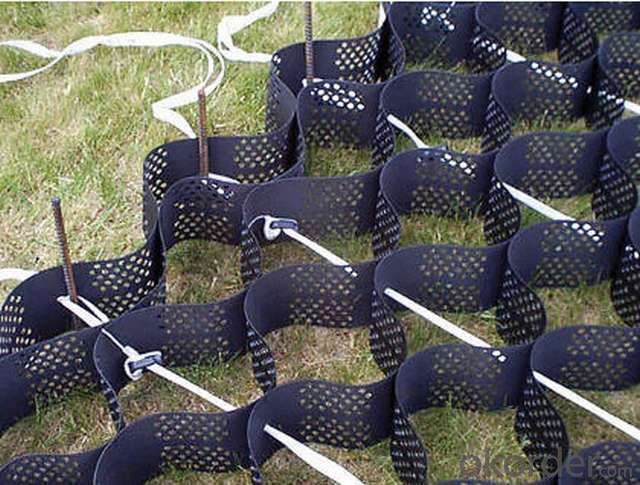
FAQ:
Q1:Can you provide a sample for us?
A:yes,we can provide for your free samples based on freight collect.
Q2:What is your MOQ?
A:MOQ is 10000sqm.
Q3:What is payment terms?
A:T/T,L/C
Q4:What is your lead time?
A:According to your order quantity,usually 7days for 1*40HC
Q5:Do the customized design accepted?
A:We welcome customized design.
- Q: How do geocells improve drainage?
- Geocells improve drainage by providing a structured and permeable surface that enhances the flow of water through the soil. The three-dimensional honeycomb-like structure of geocells creates interconnected voids, allowing water to infiltrate into the ground rather than pooling on the surface. This helps in preventing the accumulation of water, reducing the risk of flooding and soil erosion. Additionally, geocells also stabilize the soil, preventing its compaction and maintaining its porosity, further enhancing drainage capabilities.
- Q: Do geocells require specialized equipment for installation?
- Yes, geocells typically require specialized equipment for installation. This equipment may include machinery for compacting the soil, spreading the geocells, and joining them together.
- Q: What is the effect of moisture on geocell performance?
- The effect of moisture on geocell performance can be significant. Moisture can weaken the integrity and stability of the geocell structure, leading to reduced load-bearing capacity and potential deformation. It can also contribute to soil erosion, reducing the overall effectiveness of the geocell in soil stabilization and erosion control applications. It is crucial to consider moisture management and drainage systems when implementing geocells to ensure optimal performance and longevity.
- Q: Are geocells suitable for use in desert regions?
- Yes, geocells are suitable for use in desert regions. Geocells are a type of cellular confinement system that can effectively stabilize and reinforce soils in various terrains, including deserts. They provide excellent erosion control, improve load-bearing capacity, and promote vegetation growth, making them ideal for desert regions where soil stabilization and conservation are crucial.
- Q: Can geocells be recycled?
- Yes, geocells can be recycled. Geocells are typically made from polyethylene, which is a recyclable material. After their useful life, geocells can be collected and processed to create new geocells or other plastic products, reducing waste and promoting sustainability.
- Q: Can geocells be used in rooftop gardens?
- Yes, geocells can be used in rooftop gardens. Geocells provide a stable and reinforced structure that helps retain soil and prevent erosion, making them suitable for rooftop gardens where weight and stability are crucial factors. They can also aid in controlling water runoff and promoting healthy plant growth in limited space.
- Q: What is the recyclability of geocells?
- Geocells are highly recyclable. They are typically made from high-density polyethylene (HDPE), which is a commonly recycled plastic material. At the end of their lifecycle, geocells can be recycled and used to create new products, reducing waste and environmental impact.
- Q: What is the environmental impact of using geocells?
- The environmental impact of using geocells is generally positive. Geocells are made from recycled materials and can be reused, reducing the demand for new materials. They also help prevent soil erosion, promote vegetation growth, and stabilize slopes, which can have a positive impact on the surrounding ecosystem. Additionally, geocells can be filled with sustainable materials such as recycled concrete or soil, further reducing the environmental impact.
- Q: Are geocells suitable for use in wastewater treatment systems?
- Yes, geocells are suitable for use in wastewater treatment systems. Geocells, which are three-dimensional honeycomb-like structures made of high-density polyethylene (HDPE), can be used as a cost-effective and sustainable solution for various applications in wastewater treatment systems. They provide structural support and stability, preventing soil erosion and maintaining the integrity of the system. Geocells also enhance filtration and reduce the risk of clogging by promoting efficient water flow. Additionally, they can be easily installed and have a long lifespan, making them a viable option for wastewater treatment systems.
- Q: Are geocells resistant to abrasion from heavy vehicle traffic?
- Yes, geocells are highly resistant to abrasion from heavy vehicle traffic. The cellular confinement system provides a strong and durable structure that can withstand the constant pressure and friction caused by vehicles, ensuring long-lasting performance and stability.
Send your message to us
Geocells Philippines - HDPE Geocell with Various Parameters from China Supplier
- Loading Port:
- Guangzhou
- Payment Terms:
- TT or LC
- Min Order Qty:
- 10 m²
- Supply Capability:
- 9999999 m²/month
OKorder Service Pledge
OKorder Financial Service
Similar products
Hot products
Hot Searches
Related keywords
